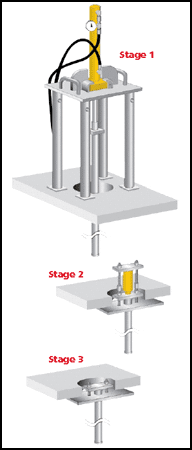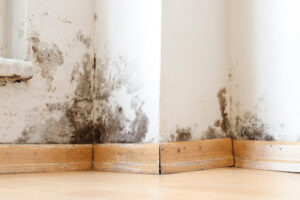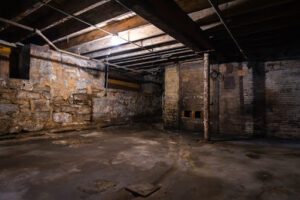Slab push piers work like any resistance end-bearing pier in that it does not rely on skin friction to produce support. Much like with any structure installation, the entire slab acts as the reaction force. The resistance slab pier is installed using a grid pattern. After installing the piers, the slab load is transferred across the piers uniformly and evenly by activating the hydraulic rams simultaneously.
When to Use a Resistance Pier Slab
So, when do you use a resistance pier slab? Primarily anytime you have a slab that needs to be lifted and stabilized due to failing soil conditions that are too weak to support the slab. Installation is accomplished inside the structure through an eight-inch core drilled access hole. These piers install quickly due to their minimal set-up time making the resistance slab pier a low cost and time-efficient solution.

Key Product Features
- Capacity: 28,000 lb. Maximum
- Standard Lift: 4″ fully adjustable
- Requirement: 4″ minimum slab thickness
- Greater Lift: Use optional long bracket rods
- Install Location: Inside structure
- Equipment: Portable hydraulic equipment
- Access: Core drilled, 7″ to 8″ hole in the slab
- Vibration: Little or no vibration
- Friction: Reduction collar on lead pier section
- Stratum: Installs to rock or verified end bearing stratum
- Testing: 100% field-tested to verify the capacity
- Lift Type: Manifold lift
- Warranty: Warranted by Atlas Master Corporation and manufacturer












